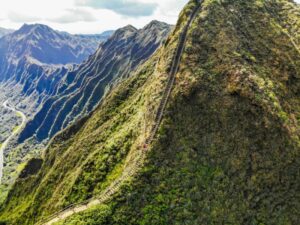This time last year, Alexander Gukov was barely clinging to life. Balanced precariously “on a tiny ledge of a couple of stones,” as spindrift avalanches rained all around, the Russian climber survived seven days and six nights alone at 6,200m on Latok 1 in Pakistan.
Gukov had travelled to the Choktoi Valley, where Latok 1 rises like an imperious giant, with Sergey Glazunov, an ambitious young climber from Siberia. The infamous north ridge, arguably the zenith of unclimbed routes in the Himalaya, was their goal. They decided on this route “because it has been one of the main problems in alpinism since 1978. And after one previous attempt in 2017, I understood that it was possible,” says Gukov.
The pair battled their way up the ridge through loose snow and long traverses and past teetering seracs. At a steep rockwall just below 7,000m, they left their remaining equipment and pushed on for the summit. On July 23, after 10 days on the mountain, Glazunov stood on what he thought was the summit, but the unstable snow and closing darkness prevented him from bringing Gukov up on belay.
They retreated as quickly as they could, but after another night on the mountain, disaster struck. Glazunov fell to his death, presumably while fixing a rappel anchor, but his exact fate remains a mystery. This left his compatriot stranded with limited gear and supplies. Gukov’s subsequent ordeal and rescue has gone down in mountaineering lore.

Sergey Glazunov on Latok 1. Photo: Alexander Gukov
This 26-minute film, Impossible Is Not Forever, is Gukov’s take on his now-infamous expedition. Dedicated to his late partner, Gukov has stitched together stunning GoPro and drone footage to create an excellent subtitled film, albeit one which excludes the tragic events that befell both climbers.
The most compelling footage shows snippets of the late Glazunov. Gukov describes him as a “nice and easy-going person who was quiet.” But he was also a young man with fire in his belly and a talent for climbing hard routes in the mountains. Seeing these clips, you can’t help but wonder what might have been.
Because of rights management, you can’t watch the film directly on this page, but if you click below, it calls up a link where you can watch it on YouTube.






